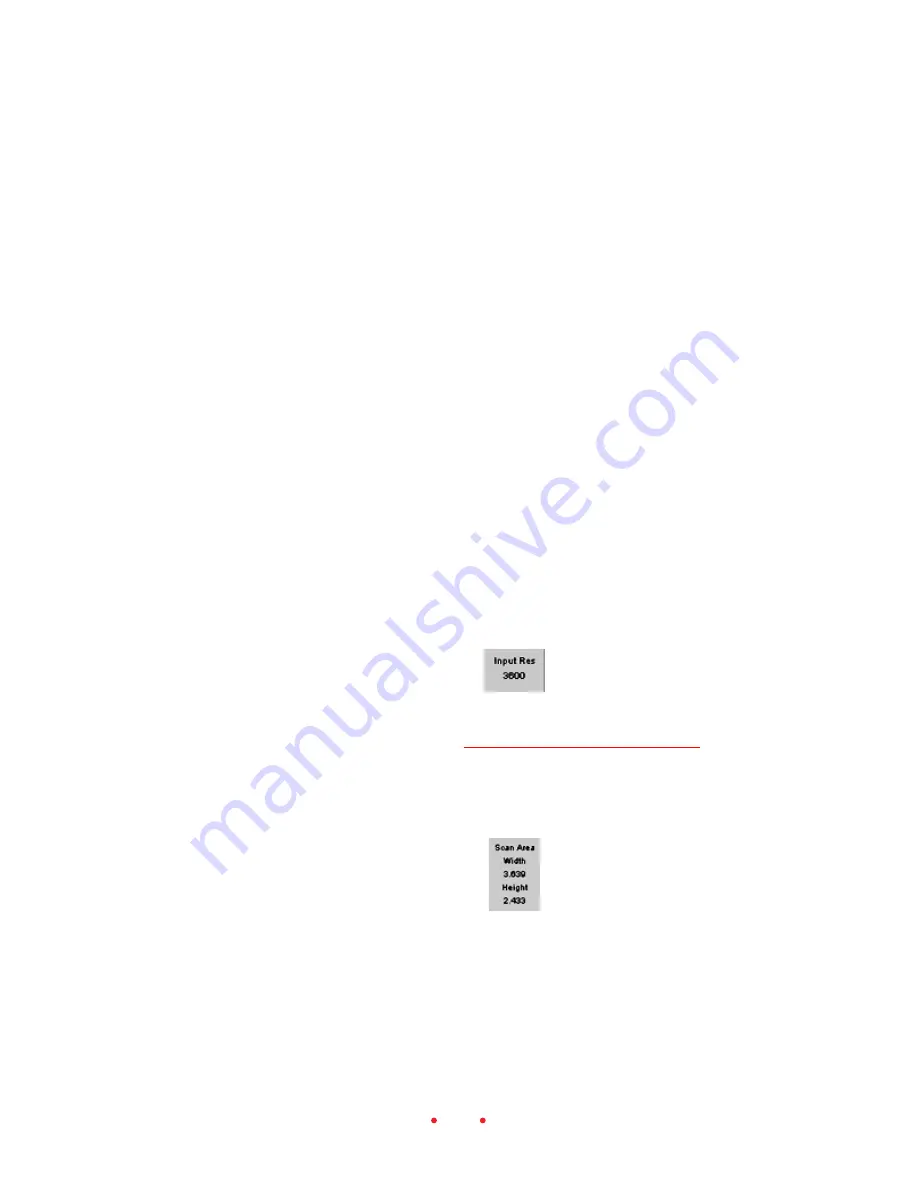
72
To save these settings, enter a name for the current settings on the dialog
box that appears. This feature allows you to create custom settings (for
example “Winter Outdoors”) for specific or unique shooting conditions.
You then retrieve one of your saved settings from the drop-down list. You
can also retrieve the original settings shipped with the scanner by choosing
Default from the drop-down list. Finally, you can also delete existing scan
profiles as needed while working on this dialog box.
This feature is useful for saving and recalling settings while working on
different filmstrips or slides across work sessions.
It may also be helpful to save settings during the same work session while
working on a single filmstrip or slide. You can use this feature to save a
variety of interim setups as you work with one image; when you decide on
the “best” settings from those you have saved, recall and use those for the scan.
Then you can use the Delete feature to delete your interim setups.
You can also use this feature while working your way through scans on one
filmstrip; you can establish and save a base set of controls for the whole
filmstrip. Then for different images on the filmstrip, recall that base set,
make necessary alterations and scan.
Scan Resolution
This field, to the right of the image, displays the scan resolution, a value
from 72 to 3600 dpi. Refer the
Output Size and Input Values
for more
detailed information.
Scan Area
This area displays the current width and height of the area of the frame to
be scanned. If a crop box appears, its dimensions are reflected here; other-
wise it’s the full frame size. The units of measurement — centimeters,
inches, or pixels — for these values are displayed at the intersection of the















































